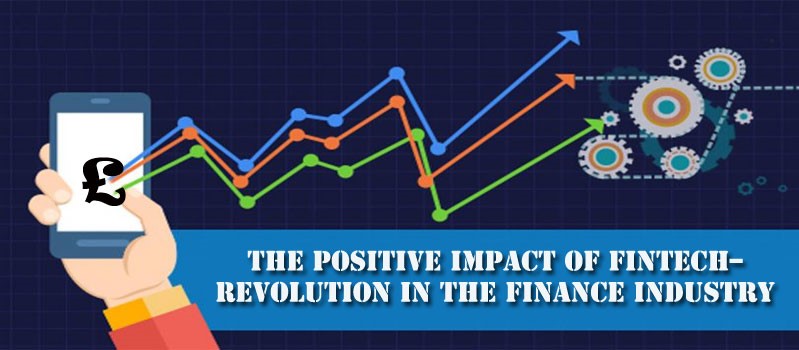FinTech has become a debatable topic recently. A couple of years ago, banks used to underestimate the impact of FinTech firms on their customers ignoring the fact that what customers feel about online services. 36% of bankers believed that FinTech offers the fastest services, compared to less than half of customers. Likewise, to the contrary of 40% of bankers, 80% of customers supported the fact that FinTech firms provide good services.
Observing the market trend, banks have been on the up and up. Before knowing the positive impact of FinTech and what banks have been doing to improve customer services, you should know what it is exactly. FinTech is a groundbreaking application continuously shaping the future of the finance industry.
Table of Contents
How is FinTech good for society?
Many people think that FinTech aims at expanding the horizon of lending by introducing loan offers such as cash loans, debt consolidation loans for bad credit, text loans etc that have not been the part of traditional lending, but the connection between FinTech and social good is beyond your perception.
It overcomes financial exclusion
The purpose of FinTech is to provide financial support to as many borrowers as possible across the nation. Fewer people in rural areas are connected to the formal banking system. In fact, 4% of UK citizens do not have a bank account. Online channels make easier for such people to receive and transfer money as and when required.
Price transparency to remittance
Some companies with the help of FinTech policy have made easier to transfer money overseas. Now people can save money in hefty fees, which was typically associated with traditional methods of transferring money.
Crowdfunding platforms have emerged
Crowdfunding practice has become popular as lenders now lend money to small entrepreneurs via the internet. Within five years since it has been launched, many entrepreneurs have set off their ventures by raising funds online that had never been possible with banks.
Nowadays users expect more personalized experience in the financial sector. Online lending has made borrowing money within a couple of minutes possible, which means direct lenders leverage FinTech to complete the loan processing quickly from shortlisting of application to disbursal of money. FinTech has tremendously improved financial services.
Here are some facts of the current state of FinTech:
- Traditional lenders are likely to adopt disruptive changes in the lending procedure in the next few years, and startups have shown greater involvement.
- The most used features of financial applications include money transfers and payments, borrowing, financial planning, insurance, and savings and investment.
The connection between FinTech and banking companies
FinTech is undoubtedly disruptive, but it is not going to make banking companies superfluous. They can either collaborate with FinTech innovators or acquire disruptive products.
Of course, it is not going to take over the banking system because it has dominated the market by piggybacking off the existing system.
Currently, there is no such link between banks and FinTech, but they should define guidelines within a FinTech strategy if both of them want to reap full benefits.
Banks must have clear accountability and decision-making frameworks. They need to choose an innovated operating model to achieve new business ideas. They currently pursue one of these three models: centralized and decentralized.
The former model helps recognize the need for innovation. It exposes certain areas of the entire system to new ideas and concepts. FinTechs can benefit from this model, but the decision-making will consume much more time.
The latter model allows each unit to run its own governance process, identifying real problems and discovering new solutions. However, this brings the drawback as all units may fail to have consistency and there is always a risk of replication in efforts. FintTech firms may or may not find it difficult to collaborate with this operating model.
However, there are pros and cons of FinTech engagement strategies:
If banks invest in FinTech companies
Pros:
- Early access to innovative solutions and higher gains
- No much time spent in marketing
- Resolves the issue of lack of in-house talent
Cons:
- A right valuation can be challenging
- Risk of mishandling of data
- Not an exclusive relationship
- Monetization of investment
If banks collaborate with FinTech firms
Pros:
- Reconnecting with customers without investment in resources
- Address innovative culture
- Benefits projects like blockchain
Cons:
- Finding a compatible partner
- Monetization of partnership
- Data security
The bottom line
There is yet a lot to explore for banks before directly collaborating with FinTechs. Some organizational structures are so complex that FinTech needs to figure out a way to navigate through them and deliver value.
Though FinTech firms have enhanced customer experience, banks cannot immediately challenge the traditional structure. They should combine modern technology with traditional lending structure to make lending easier, smoother, faster and more transparent.
Alex is fascinated with “understanding” people. It’s actually what drives everything he does. He believes in a thoughtful exploration of how you shape your thoughts, experience of the world.

